For an escapist who indulges in the idea of living vicariously through fictional characters, I wasn’t keen on wearing the shoes of Maya—the protagonist of “Ampangabat Nin Talakba Ha Likol” (It’s Raining Frogs Outside)—when I watched it in QCinema 2021.
In the experimental short film directed, written, and edited by Maria Estela Paiso, Maya (played by Alyana Cabral) is forced to return to her hometown of Zambales where her childhood home stands. Its interiors are quiet, and so are the lush outdoors peeking from the wooden windows. Well, minus the sound of frogs literally raining outside.
However, what anyone would expect as a nostalgic reunion with innocent memories would turn out to be an eerie encounter with the self. With a dark avalanche of flashbacks and thoughts coming as uninvited guests, Maya, alone at home, experiences some sort of personal exorcism.
We usually avoid isolation because of boredom or loneliness. But what we sometimes don’t admit is how being alone and isolated forces us to remember deep-seated feelings: fears, issues, and unresolved memories, to name a few.
And maybe this is why I didn’t exactly desire to be Maya. We already are Maya in the first place, trying not to let repressed fragments of our past overspill into the present—which is horror in itself to confront.
In VHS tapes, mundane scans, and old photographs, the film paints a suffocating picture of our headspace. Later on, we see this physically manifest through the story’s own take on body horror.
View this post on Instagram
For such a specific story, “It’s Raining Frogs Outside” was a universal success. Among the circuit’s stops include the SeaShorts Film Festival, the Seoul International Women’s Film Festival, and the prestigious Berlinale—making history as the first film by a Filipina filmmaker and the first one told in the Sambal language to compete in the shorts competition.
Curious about how its mastermind went through her own self-confrontation, we talked to Maria Estela Paiso on the team’s creative process, the Sambal language, and the role of frogs—both in the film and the 25-year-old filmmaker’s life.

Director’s photo, courtesy of Maria Estela Paiso
Can you recount your eureka moment for “Ampangabagat Nin Talakba Ha Likol”?
The short film was inspired by a two-part comic by Shin (@electromilk). At the time I read the comic, I was part of Keith Deligero and Gale Osorio’s Archipelago Lab, tapos dine-develop ‘yung feature film kong “Karaoke Dreaming…” Tapos bilang nonsense, pinasa ko patago ‘yung first draft ko to another development lab kasi nahihiya ako ipabasa kina Keith and Gale and my Archipelago batchmates. So na-reject.
Another grant for short films came along and we submitted it, this time “Ampangabagat” na ‘yung title. Na-reject ulit, tapos nag-blackout na ako in between, pero sure ako dinevelop pa siya further. The call for QCinema came, then I was asked to pitch. One week intensive pitch practice siya, then after pitch, nilagnat ako sa sobrang daming feelings at pagod (laughs). Nakapasok naman!

Walk us through the film’s creative process and your most favorite part.
Honestly, wala kaming alam [on production] kasi post-production talaga kami ng buong crew—bukod kay Mama Gale, siyempre. Ang naging solution was to practice everything in advance: Plan all the shots then practice literally everything.
For a 14-minute short, four days kami nag-shoot. We really took our time just to make sure everything was covered. I think the fact that we (me, my assistant director, and my director of photography) were all first-timers added to the overall thrill kasi nag-emulate na lang kami kung ano ba ang dapat naming gawin on set. It was also Aly’s first time to act!
Post-production, I think, was the easiest dahil nga post-raised ang crew ko. Easy in the sense that the decisions came easier, it was just a matter of chroma adjustment, attaching the faceless plate to Aly’s face, ’yung typical process. But I guess we already knew what we were doing kasi six years na kaming magkakaibigan at magkakatrabaho. Pero post-prod din siguro ‘yung pinaka-puyat kami, diyos ko (laughs).

Why did you choose frogs as your major element?
I owe the decision to use frogs kay Direk Keith kasi siya ’yung kabatuhan ko ng ideas during its development. ’Yung original script ko kasi may delubyo, tapos sabi ni Direk, ano pa bang pwedeng delubyo?
Dumaan kami sa fish, cats and dogs, crabs. Pero we decided on frogs kasi it fit with the existing elements of the script, plus it really felt right. Ewan ko, feeling-driven lang talaga karamihan ng decisions ko, eh (laughs).

Siguro nakadagdag din ’yung memories ko sa Zambales nung bata ako, na tuwing umuulan, ang daming kumokokak sa labas ng bahay ng tita ko, sa kanila kasi kami tumutuloy dati. Minsan may makakapasok pa sa bahay tapos tatalon-talon, magtitilian kaming magpipinsan. Malapit din kasi sa palayan ’yung bahay na ’yun.
Kung “theoretical” or something—(laughs) hindi ako nag-film school, kaloka!—ni-research ko rin at apparently may Biblical passage tungkol sa rain of amphibians. Nung natapos ’yun, nag-symbolize daw siya ng forgiveness sa mga tao. Bilang hindi gaanong religious [na tao], in-appropriate ko na lang to personal experience kasi love letter or farewell ito sa childhood ko, eh.
What’s the best part of working with your team that could be a potential Core Memory in the future?
Swinerte talaga ako sa mga taong sinama ko sa “Ampangabagat.” Baka emo girl lang din kasi ako at sentimental, pero malaki ’yung utang na loob ko sa kanila kasi sinakyan talaga nila ’yung mga gusto kong mangyari, tapos dire-diretso lang, walang tanong kung bakit.
Kaya lagi kong sinasabi na director-writer-editor ako ng short na ito, para lang i-emphasize na all the other roles ay ginawa ng mga taong malapit sa akin. ‘Yung buong experience talaga [’yung Core Memory], siyempre [as my] first serious short.

“It’s Raining Frogs Outside” is the first film told in Sambal that competed in the Berlinale Shorts section. How does your relationship with this language play a part when you were growing up?
Nakakaloka ’yung first na label, ’no?! Sana may iba pang Sambal films na lumabas in the future, medyo uhaw ako sa chika sa mga kapwa kong taga-Zambales eh (laughs).
Nung bata kasi ako, Zambales-Manila ako lumaki. Ang concept ko non eh stressful ang Manila, kasi doon ako nag-aaral, tapos ang saya ng Zambales, kasi nandun kami tuwing bakasyon. Pero all along, nasa Amungan, Zambales man ako or Manila, laging Sambal ’yung gamit ng nanay ko para kausapin ko, to the point na—nung hindi ko pa masyadong naririnig ’yung mga tita kong magchikahan in Sambal—akala ko inimbento lang siya ng nanay ko para may secret code kami, para hindi kami maintindihan ng ibang tao kapag nagchichismisan kami sa jeep.
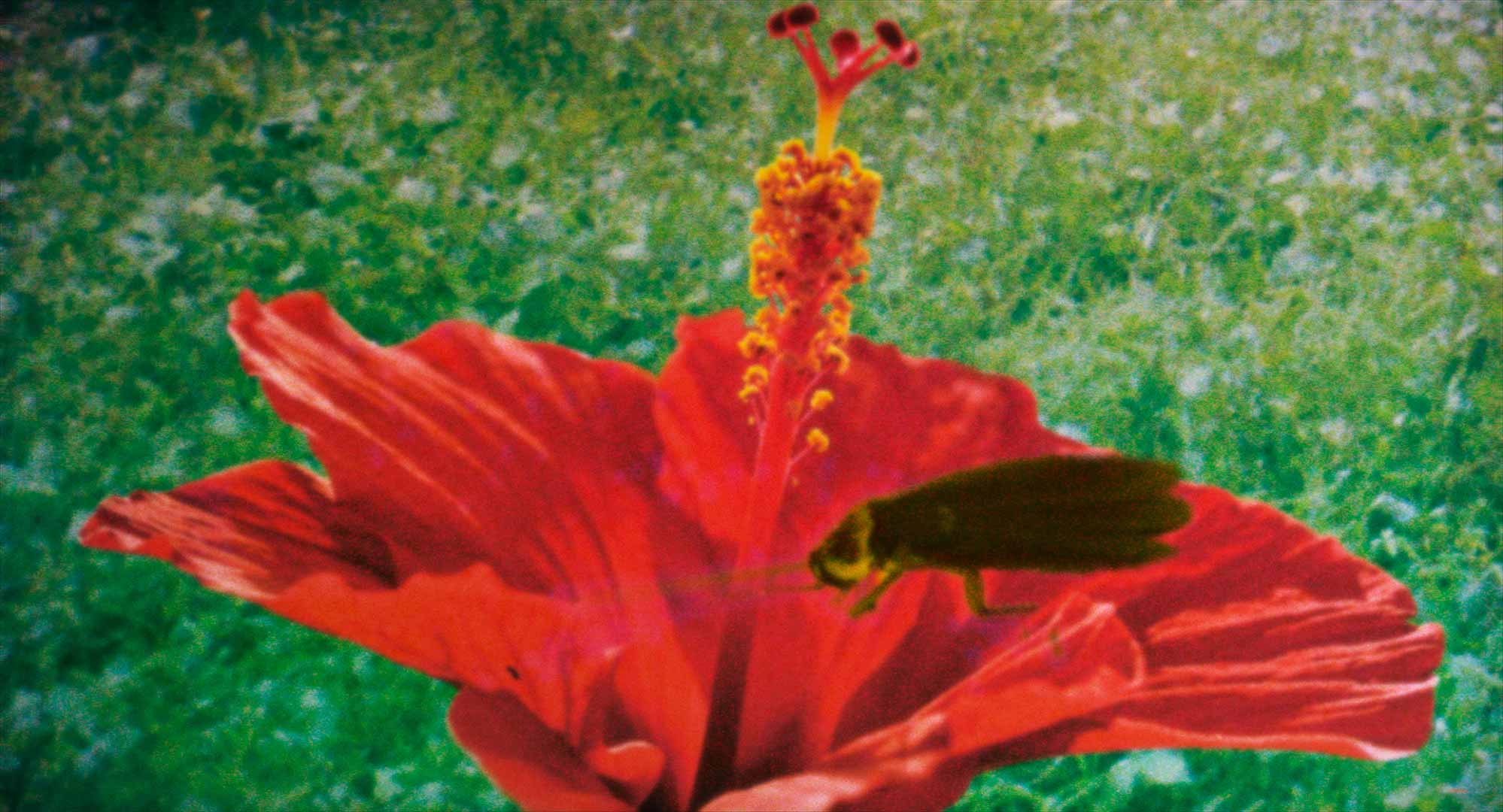
Hanggang ngayon, Sambal pa rin kami mag-usap, kahit sa chat. Nung tumanda nga lang ako, skewed na ’yung perspective ko about hometown kasi ang dami nang nagbago: Umalis na ’yung iba kong kamag-anak, may mga nag-away dahil sa lupa, mga ganyan.
So may dissonance akong nararamdaman kasi ang saya ko doon dati eh. Pero ngayon, parang umiiwas na akong puntahan siya kasi iba na ’yung dynamics ko with my other relatives. Siguro ’yung combination ng lahat ng pent-up emotions, lalo na ’yung frustration sa pagbabago ng lugar na gustong-gusto kong puntahan dati, malaking dahilan siya kung bakit Sambal ’yung “Ampangabagat.” Part na rin kasi ang Sambal kung sino ako, kahit nanay ko lang nakakausap ko in that language.
Archival footage of Alyana Cabral (who plays Maya) is spread throughout the film, clueing us in on the deeper aspects of this character’s past. What is it like working with Aly in this process of personal dissection?
Trivia: Hindi ko alam na merong birthday footage si Aly when we got her as our actress. Literally nagtanong lang ako after the shoot, sabi ko, “Aly, meron ka bang baby videos and photos?”
Nung una akala namin photos lang, tapos biglang may nahanap siya na birthday na pinuntahan niya dati. Sobrang natuwa ako nung sinend niya ‘yun, literal tumalon ako (laughs). Isa siya sa “falling into place” things na na-experience namin during post.
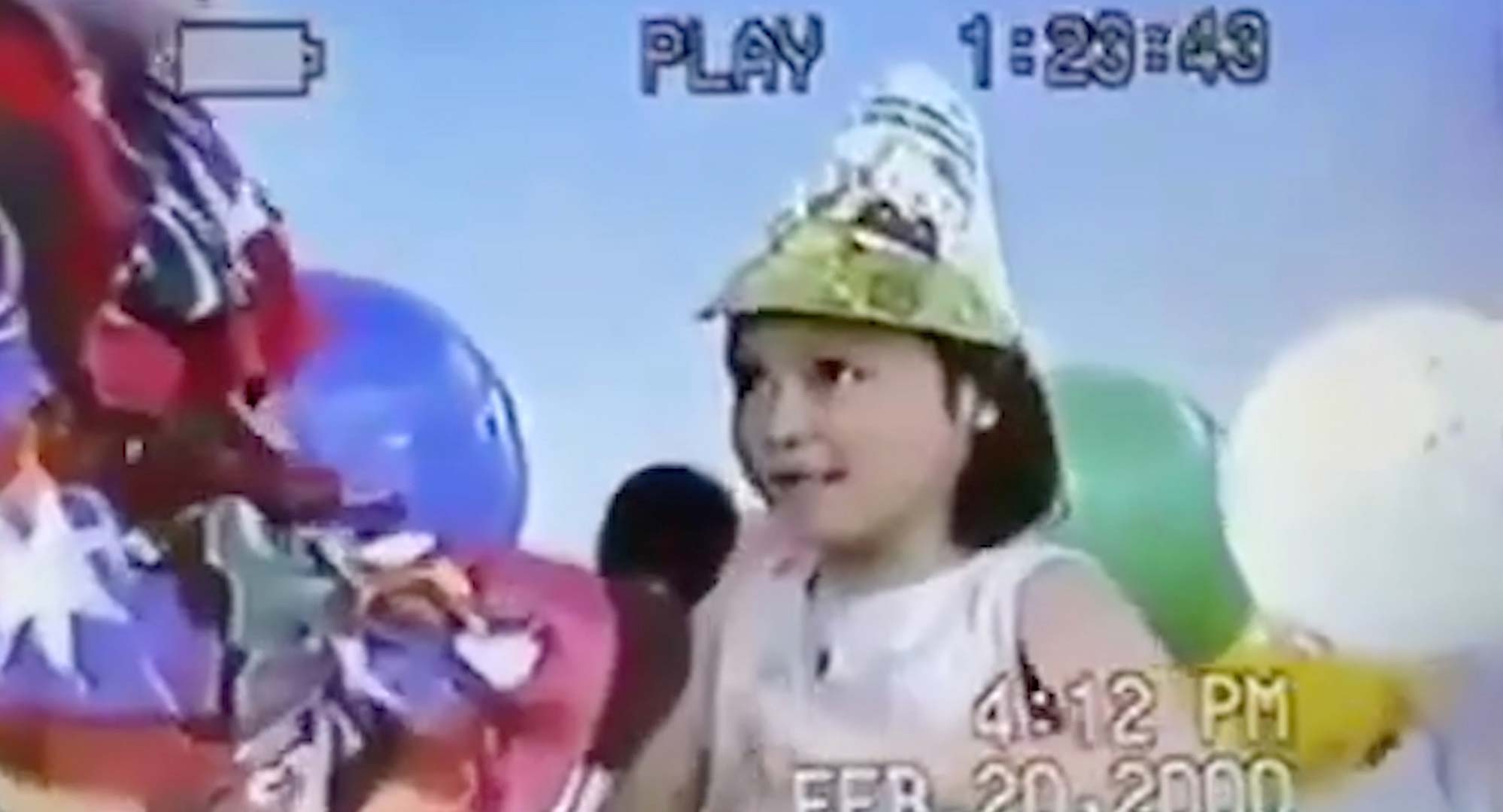
Isa pa palang trivia, ang funny talaga na nakuha namin si Aly. Nung 2013 to 2015, college pa ako, fan talaga ako ng Ourselves [the Elves]. Syempre doon ko nakilala si Aly. Malay ko ba na several years later makakatrabaho ko siya, bilang artista pa namin. Friend kasi siya ng DP naming si [Eric] Bico, kaya buti na lang talaga!
Ang saya bilang actress si Aly, tsaka siyempre naging tropa ko na rin siya dahil sa tagal naming magkasama. Parang may super general brief lang akong sinabi sa kanya, in-explain ko ’yung mga bagay na kailangan niyang gawin, pero siya ’yung nagdagdag ng little things para i-angat ’yung presence niya sa screen, tulad ’yung nasa tubig siya tapos nagsu-struggle sa buhok. Meron din kaming shared love for karaoke!

The story is driven by isolation. As a viewer (and despite being an introvert myself), I felt instant discomfort with some of the film’s scenes, when the horrors of confronting the self became more apparent. As a storyteller, how does loneliness guide your work?
Nagugulat talaga ako tuwing may nagsasabi sa aking may ganyan silang klaseng reactions to the short, then I remember, “Ah, naglagay nga pala ako ng scene na pumapasok ang ipis sa mata (laughs).”
Baka rin kasi editor ako, so kung anu-ano nang kwento ang dumaan sa amin sa post house, kaya nung ginawa namin ’yung “Ampangabagat,” wala akong conscious effort na “Oh, ginagawa natin ’to para mandiri sila, para ma-shock sila.”
It’s more [like] ginawa natin ’to para manggulo (laughs). Kasi ito ’yung mga trip kong mapanood sana! Nung nagsisimula pa lang ako manood ng mga pelikula, paborito ko ’yung mga kakaiba eh, ’yung may effort na siguraduhing hindi ka pa nakakakita ng ganun dati. Kaya rin siguro mahilig ako sa music videos, kasi ang dami kong napanood na “Shet, sana naisip ko rin ’yun, sana nagawa ko rin ’yun.” Buti na lang talaga nasa post-production ako, kaya medyo malawak ’yung possibilities na naiisip ko.
Obscure kasing concept ang loneliness, ang pagkabulok ng sarili, ang internal turbulence, ang reinvention… ’Yung mga bagay at emotions na nasa utak natin, admittedly may struggle talaga na sabihin siya sa iba, both chika and in the cinematic language.
Isa sa mga pinakagusto ko about “Ampangabagat” ay sumakto siya as my first short film, kasi very personal siya. Literally destruction and reinvention of self siya, at pakiramdam ko, dahil culmination siya ng confusion, drama, at galit ko sa buhay, pwede na akong mag-move on sa iba kong concerns sa buhay (laughs).
Siguro more than my ma-dramang self, kaya rin ako nasa post-production kasi field siya na oks lang hindi lumabas, oks lang hindi mangausap masyado. Kaya siguro ’pag nakakalabas kami para kaming mga bagong laya (laughs). Pero better word siguro ang solitude, kasi hindi naman palaging masama ang relationship ko sa pag-iisa.
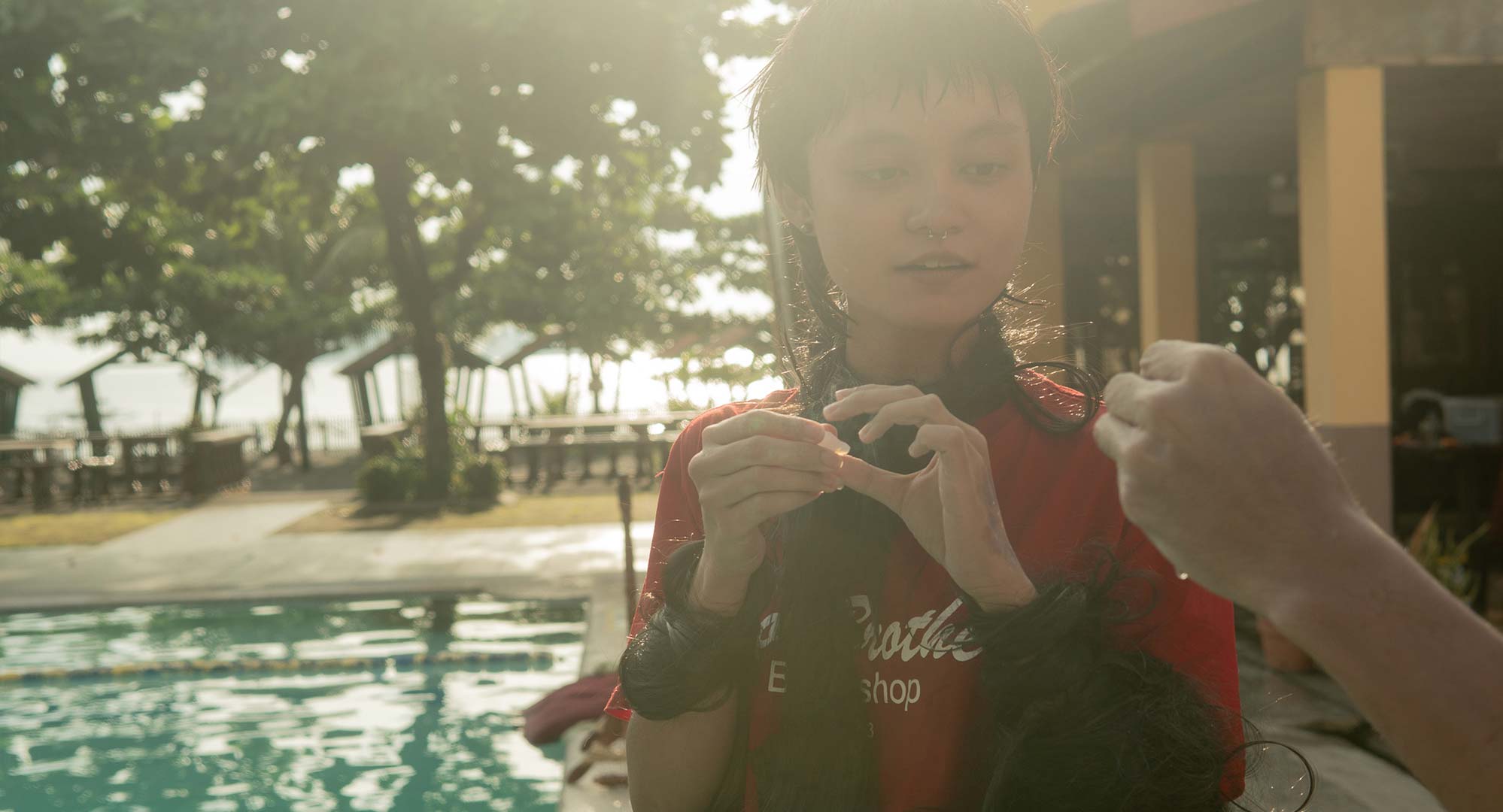
Siguro ang isa sa main “guides” o “driving forces”—char—sa mga gawa ko ay galit. Lagi kasi akong galit. Pero hindi kasi ako ’yung tipong sigaw-galit, bilang Scorpio (laughs). Siguro dalisay na galit, at laging may effort na dapat ’yung galit ko hindi preachy, dapat ma-gets kung bakit, tapos magagalit din ’yung nakanood. Hindi siguro “Ampangabagat” ang best example kasi more on frustration sa sarili siya, pero may hints of rage din na naka-sprinkle sa kanya somewhere.
Itong [“BOY” feat. Kartell’em and BLKD], ’yung paborito kong gawa before “Ampangabagat.” Better example nung galit na tinutukoy ko (laughs).
Your film has gone through numerous international festivals and was even included in this year’s Cinemalaya roster. What has the experience been like getting a wide viewership for such an offbeat and vulnerable narrative?
Matrabaho pala iikot ang film sa festival circuit lalo na kung wala kang distribution or sales agent. Don’t get me wrong, masaya siya! Pero siyempre editor ako dati ’di ba, wala akong alam sa nangyayari sa pelikula after namin i-export.
Mas nagulat pa ako na kailangan palang magpadala ng mga video, um-attend sa mga presscon, mga ganun! Ang showbiz ng mga ’yun para sa akin pero kailangan na pala siya ngayon (laughs). Anyway that’s just me and my nonsense, medyo naka-adjust na rin naman ako at nag-eenjoy na sa whole process of touring sa festivals kasi meron na akong Excel sheet (laughs).

Itong viewership, kaloka, kung may pinakagusto man ako sa pag-ikot sa festivals, ’yan ’yon. Tulad ng nabanggit ko kanina, pinaghirapan namin ’to ng mga taong malapit sa akin, at ’yung mapanood siya sa iba’t ibang bansa eh parang alam mo ’yun, to an extent napagmamalaki ko sila. ’Yung “offbeat,” paborito ko ’yan. Sabi ni Mama Gale ang term daw ay “polarizing” (laughs).
’Yung “vulnerable,” well, hindi siya malaking issue for me kasi naiyak ko na lahat while we were making the short. Sometime during post, nag-make peace na ako with myself na tungkol naman talaga siya sa akin, at siyempre for a film na tulad nito, ’yun ang pinaka-effective way to go about things.

Your upcoming short film project, “Objects Do Not Randomly Fall From The Sky,” will also tackle social issues, like your debut short. How important is it for you as an artist to amplify pressing concerns especially in the current socio-political climate?
Sa “Ampangabagat,” may segment tungkol sa territorial conflict sa Panatag Shoal, tapos ’yung “Objects” tungkol na talaga doon. Siyempre lagi namang may kagustuhang magkwento at magbigay-boses sa mga isyu at grupong nakararanas ng inhustisya mula sa sistema ’di ba, lalo na dito sa Pilipinas. Siguro ang kaso lang sa akin, tulad ng fact na tinuturing kong hometown ang Zambales, parang wala akong choice kundi ganun talaga ang tahakin na klase ng narratives.
I mean may choice ako pero affinity-wise nga, nagsimula ang director-ish attempts ko sa paggawa ng mga music video, na karamihan hiphop at tungkol sa social issues. So siguro on a basic level, kaya ganito ’yung mga ginagawa ko dahil may koneksyon siya sa kung sino ako, at mas dama ko ’yung pangangailangan na ipaglaban ’yung mga ganitong bagay.

Pakiramdam ko ang mahalaga ngayon ay gumawa talaga, kahit man lang para matandaan ’yung mga kasalukuyang nangyayari. Dumaan na nga tayo dati sa ilang dekadang pagkalubog sa utang at pagtapak sa karapatang pantao pero binalik lang natin ’yung anak bilang presidente ’di ba (laughs).
Mahalagang ipaalala sa iba ang kasalukuyan at nakaraan. Madali naman talagang walang gawin kapag hindi ka apektado pero ’di ba sabi nga nila, ang hindi pagkibo ay pagkampi sa kalaban. Sa panahon ngayon, tayo-tayo na lang ang magkakakampi.
This interview has been edited and condensed for clarity.
Behind-the-scenes photos and film stills courtesy of Maria Estela Paiso
















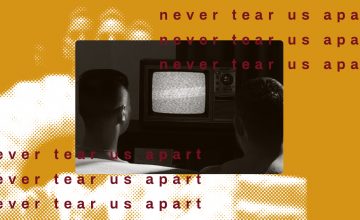



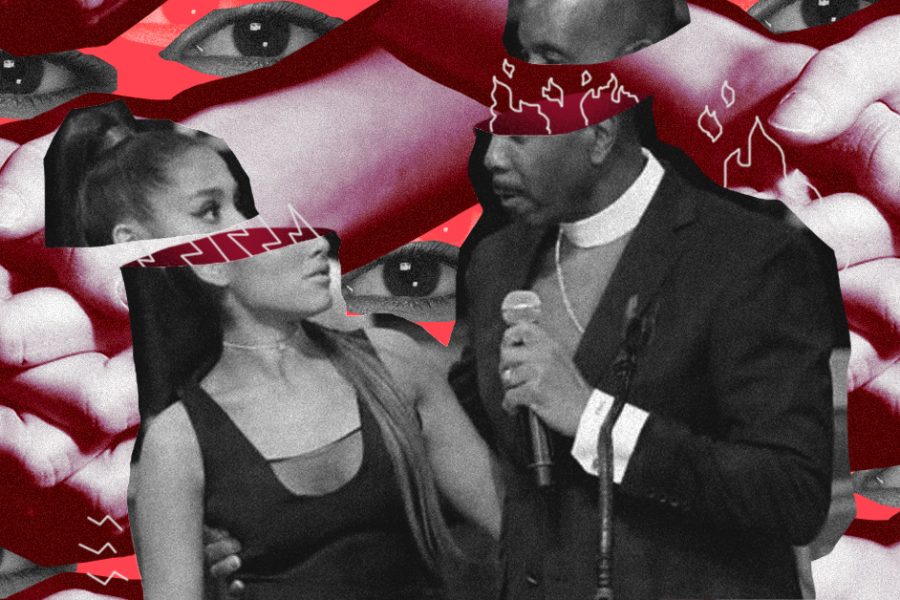



Comments